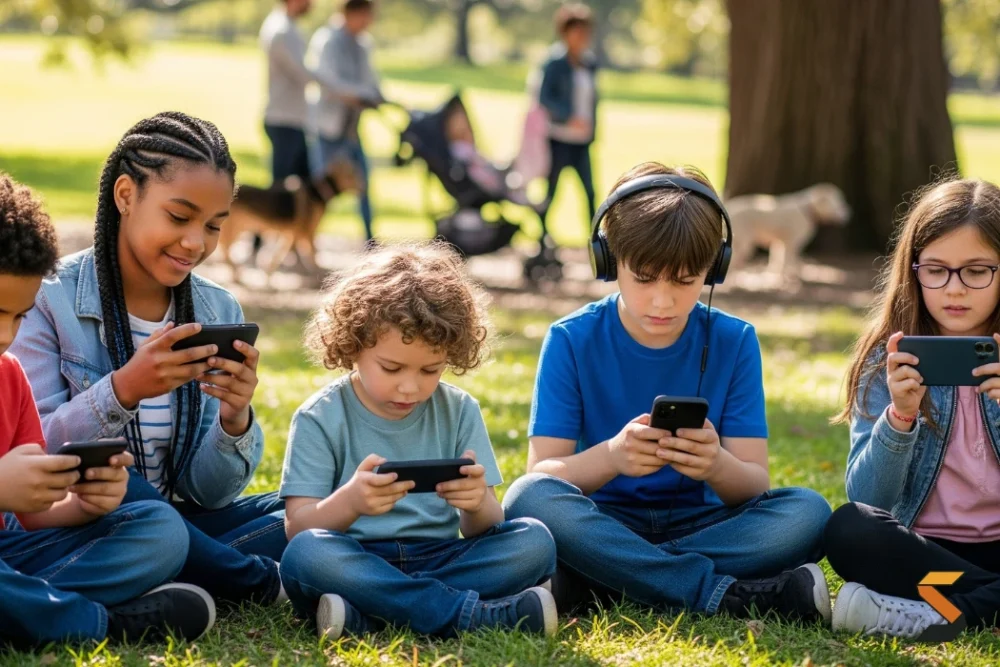For years, the conversation around youth mental health and digital devices has often centered on a single, seemingly simple metric: screen time. Parents, educators, and even policymakers have wrestled with how many hours are too many, often viewing the sheer volume of time spent online as the primary culprit behind rising rates of anxiety, depression, and suicidal ideation among young people. However, new research from Weill Cornell Medicine and Columbia University Irving Medical Center is now challenging this long-held perception, urging a crucial paradigm shift: the real risk to youth mental health isn’t screen time alone, but rather the insidious grip of “addictive use.”
Published on June 18, 2025, in the prestigious Journal of the American Medical Association (JAMA), this longitudinal study, drawing data from the Adolescent Brain Cognitive Development (ABCD) Study, meticulously tracked over 4,200 U.S. adolescents aged 10-14 over four years. Unlike previous research that often provided a snapshot of screen habits at a single point in time, this study delved into the evolving patterns of digital engagement, specifically distinguishing between mere usage and behaviors indicative of addiction. The findings are stark, clear, and demand our immediate attention.
Dr. Yunyu Xiao, assistant professor of population health sciences at Weill Cornell Medicine and the study’s first author, articulated this critical distinction: “For parents and educators, the discussion around mobile phones and social media has focused on limiting or banning use, but our results indicate more complex factors are involved.” The study revealed that total screen time at baseline had no significant association with future suicide-related or mental health outcomes. What truly mattered was how youth were interacting with their digital worlds, specifically, whether their engagement showed signs of compulsion, distress, or a loss of control.
The Trajectories of Addictive Use: A Closer Look
The researchers identified distinct trajectories of addictive use across social media, mobile phones, and video games. By age 14, a concerning percentage of participants exhibited high or increasing addictive patterns: nearly one in three for social media, one in four for mobile phones, and over 40% for video games. These patterns were defined by indicators such as feeling unable to stop using a device, experiencing significant distress when disconnected, or using screens as an escape from problems.
The consequences for those on these “high” or “increasing” addictive trajectories were sobering. These adolescents faced approximately double to triple the risk of suicidal thoughts, suicide attempts, and symptoms of anxiety, depression, aggression, or rule-breaking. Dr. Yuan Meng, co-first author and postdoctoral associate in population health sciences at Weill Cornell, emphasized the urgency: “Parents may want to pay more attention to how their kids are using their digital devices and consider having them evaluated for signs of addictive use.”
Interestingly, the study also highlighted nuanced differences across platforms. While social media and mobile phone use showed both “high” and “increasing” addictive trajectories, video game use predominantly followed “high” or “low” paths, suggesting a more stable, albeit equally concerning, pattern. For instance, high addictive use of mobile phones was associated with a more than twofold increased risk of suicidal behaviors, and video games with a 54% higher risk of suicidal behaviors, along with the largest increase in internalizing symptoms like anxiety and depression.
Shifting Our Approach: Beyond Bans to Understanding
This research provides a powerful impetus to redefine our strategies for protecting youth mental well-being in the digital age. Simply imposing screen time limits, as some schools and parents have attempted, may not only be ineffective but, as Dr. Xiao noted, clinical trials have shown that such measures were not effective in reducing the risk of suicidal behavior or improving other aspects of mental health. In some cases, drastic limitations might even reinforce addictive behaviors if an underlying compulsion exists.
Instead, the focus must pivot to early identification and intervention for addictive screen use. This means fostering open dialogue with young people about their digital habits, observing behavioral cues like irritability when a device is removed, preoccupation with online activities, or neglecting responsibilities in favor of screen time. Pediatricians are now being encouraged to integrate assessments of screen engagement patterns into their regular check-ups, looking beyond mere duration to the quality and nature of digital interaction.
For parents and educators in New York and across the nation, this study is a call to action. It’s about building digital literacy that equips our youth with self-awareness and self-regulation, rather than imposing blanket restrictions that miss the true issue. It means equipping them to recognize the signs of compulsive use in themselves and their peers, and empowering them to seek help. If signs of addictive use are identified, professional guidance from mental health experts is paramount. This isn’t just about limiting access; it’s about nurturing healthy relationships with technology, ensuring it remains a tool for connection and learning, not a pathway to distress.
The journey to support our youth through the complexities of the digital landscape requires empathy, understanding, and an informed approach rooted in credible research. By shifting our focus from the clock to the connection, understanding how our children are engaging rather than just how long, we can better safeguard their mental health and empower them to navigate the digital world with resilience and well-being.





